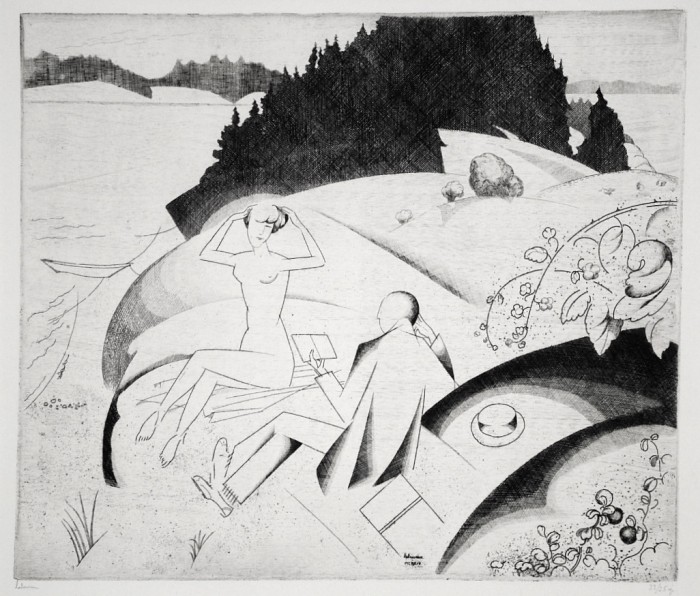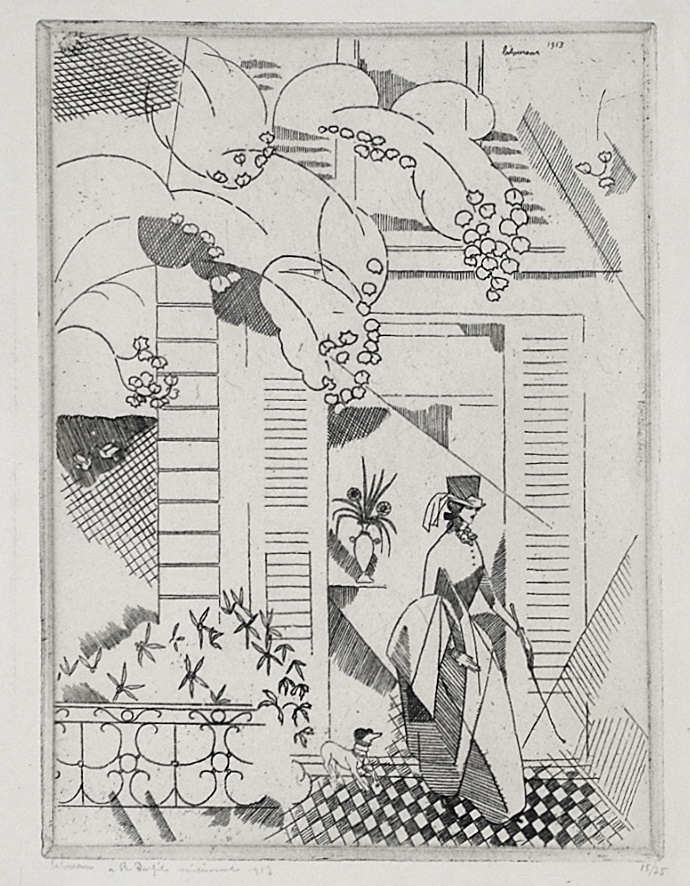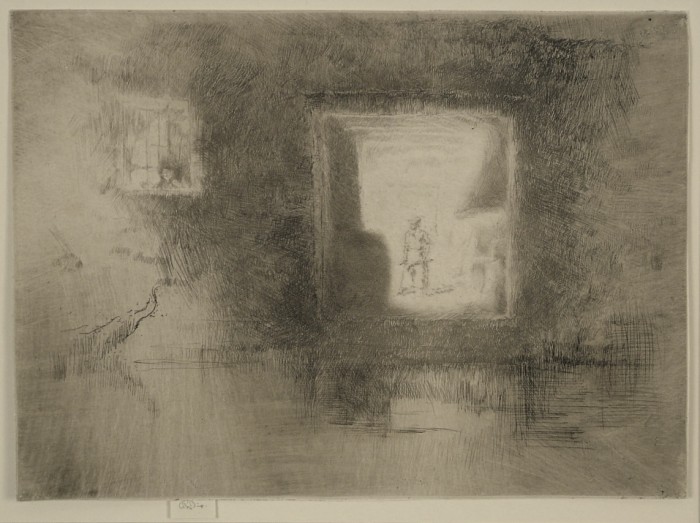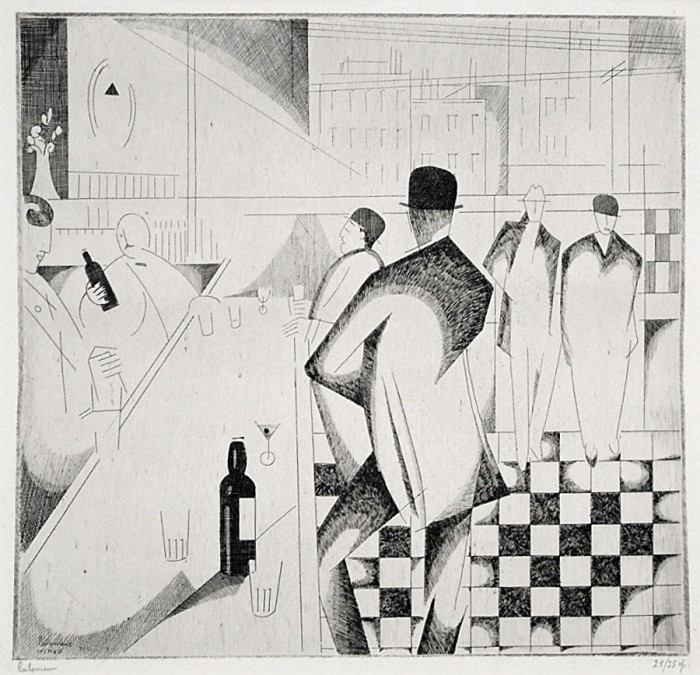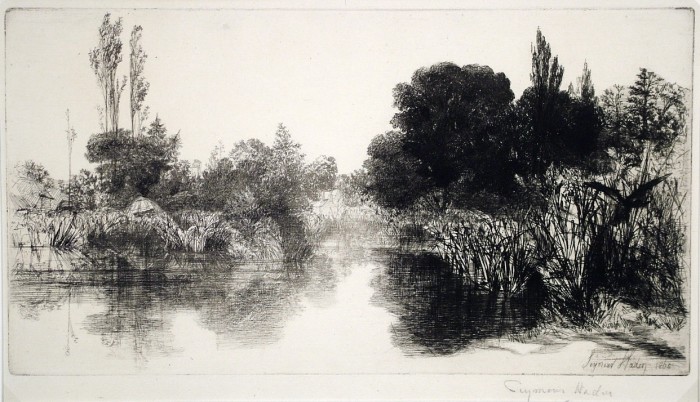L’ile Desert
Friday, March 30th, 2012Jean-Emile Laboureur (1877-1943), L’ile Desert, etching, 1914, signed in pencil lower left and numbered lower right (33/35). Reference: Laboureur 135, only state, from the edition of 35. In very good condition, the full sheet, printed on cream wove Van Gelder Zonen paper (with the full watermark), 11 5/8 x 13 5/8, the sheet 17 1/2 x 22 inches.
Provenance: Marcel Lecompte, Paris, with his pencil marking recto.
A fine impression of this large cubist composition, printed in a dark brownish/black ink on a cream white wove paper.
L’ile Desert was based on a visit Laboureur made to Nova Scotia (La Nouvelle-Écosse).
